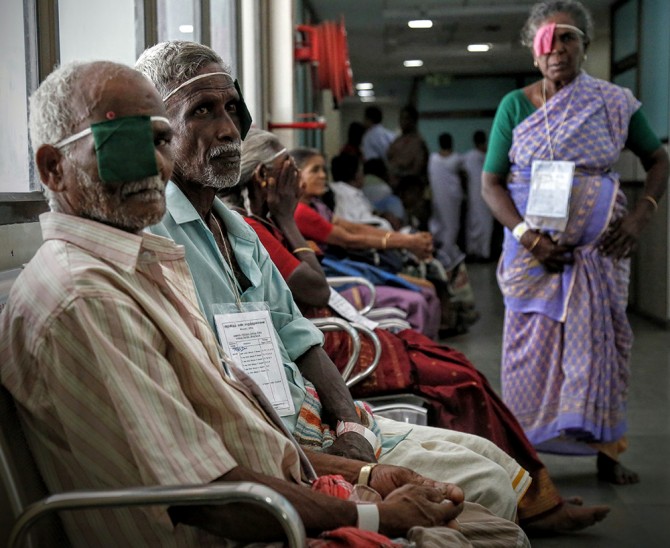Rethinking revenues at health care nonprofits
By Susan Kelley
Nonprofit health care organizations in low- and middle-income countries often serve poor patients for free and charge affluent patients full price. The conventional wisdom is, the free services require financial subsidies from paying patients.
A new study by a Cornell marketing expert upends that assumption. And it offers new insights into optimal resource allocation at health care nonprofits not only in low- and middle-income countries but also in higher-income countries.
The study, led by Sachin Gupta, the Henrietta Johnson Louis Professor of Management, found that community outreach clinics and associated promotions aimed at nonpaying patients act as advertising that attracts paying patients as well.
“This research says that the marketing and staffing of outreach clinics pays for itself, which really encourages doing more of them – or at least encourages administrators not to be concerned that marketing the clinics is a pure cost activity,” Gupta said. “There are dollars flowing from the mission side to the revenue side, which have been largely ignored.”
The paper, “Spillover Effects of Mission Activities on Revenues in Nonprofit Health Care,” was published Nov. 21 in the Journal of Marketing Research.
Gupta and his colleagues studied nine years of data from the Aravind Eye Hospital in Pondicherry, India. One of the world’s largest eye care organizations, Aravind performed more than 463,000 eye surgeries in 2016-17, most of which treated cataract-related blindness. Aravind has developed an extensive community outreach system including eye screenings at temporary clinics and mobile units, promoted through means including posters, billboards and referrals through community leaders.
When Aravind was created in 1976, Thulasiraj Ravilla, a founding member and a co-author on the study, noticed an interesting pattern. After an outreach clinic took place in a particular village, an influx of paying patients from that village flowed in to the main hospital two months later – even though Aravind hadn’t specifically targeted them as patients. Since then, Aravind had grown significantly and the pattern was no longer discernable. Ravilla thought it might still be occurring, but lacked proof.
Gupta noticed the dynamic, too, when he read about Aravind. “Everything I study in the marketing world says you have to spend money, on advertising or a sales force, to generate demand,” he said. “In this case, we knew Aravind spent no money in marketing to the paying patients. And that just seemed unusual. Why are those patients coming?”
The research team collected data onwhen and where the outreach clinics had taken place, and when and where paying patients had come from. The correlational pattern told them the clinics and their promotion attracted affluent patients as well, but directly to the hospital.
“What draws the paying patients in is price transparency, which is a big issue in health care markets in countries like India, and perceived quality, which is spread through word of mouth from other patients,” Gupta said.
They found the clinics influence poor patients within a geographical distance of five miles and for three weeks, whereas they influence paying patients within a distance of 10 miles and for five weeks.
“We found that the paying patients respond over a longer period of time. That’s because perhaps they deliberate more about where they should go – because they have choices,” Gupta said. “Whereas for a person who is less affluent, they learn that Aravind Hospital is nearby and provides eye care, and they don’t know about or have access to alternatives. These findings suggest advertising is having an effect.”
Also at play is the fact that the eye problems Aravind treats are progressive and don’t have to be attended to immediately. “The presence of a stimulus like an outreach clinic and the associated advertising makes the eye problem salient and reminds the paying patient, ‘Oh, I should take care of my eye. There is a provider nearby,’” he said.
Health care nonprofits that ignore the revenue stream flowing from the mission side of operations risk not investing enough in it, he added. “The model of cross-subsidizing is more sustainable than was previously thought.”
Gupta’s co-authors are Omkar Palsule-Desai of the Indian Institute of Management, Indore, India; and C. Gnanasekaran and Thulasiraj Ravilla of Aravind Eye Care System.
Media Contact
Get Cornell news delivered right to your inbox.
Subscribe


